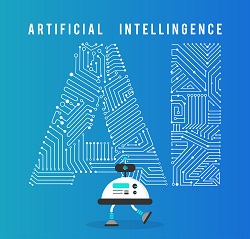Are you ready for some football? While NFL games will be played in empty or fractionally filled stadiums when the 2020 season kicks off Sept. 10, TV viewership is expected to be high as America’s most popular spectator sport returns for the first time since the coronavirus crisis hit.
And since football season is pizza season, America’s pizza makers must be ready to meet demand for their pies (as well as chicken wings, snacks, soft drinks, and other game-time staples). In a survey of 2,500 NFL fans that my company conducted recently, nearly half said they plan to order food most or all games. If that’s the case, pizza chains can expect calls and website visits from more than 10 million hungry viewers on any given Sunday.
In the battle for fans’ stomachs and wallets, it’s important for these companies to be able to understand exactly when and where demand spikes will occur so they can prepare accordingly and please customers no matter what. If a pizza chain can predict orders store by store, it can make sure ahead of time that the busiest outlets have the right amount of dough, sauce, and toppings and deploy more preparers and drivers. That’s a big win for the company, its stores, and, most importantly, customers.
On one hand, it would seem obvious that televised sports can drive huge demand for such businesses. For example, the Super Bowl typically creates a 40 percent surge beyond a normal Sunday in Domino’s orders nationwide. Thirty-seven percent of Super Bowl viewers were estimated to eat pizza during last year’s Super Bowl, according to market research firm YouGov. Ergo, if it’s Game Day, expect more orders.
But on the other hand, the situation on the ground is far more complex. Not all NFL games drive the same amount of demand. A variety of factors affect the number of orders, from broadcast time to the weather to team performance (our data reveals that as a team gains momentum during the season, pizza orders increase).
Because forecasting demand is such a tricky challenge on a local level, these businesses need to draw on a much wider, more complex set of data to inform their strategies for marketing, inventory, and staffing. Which is why some are turning to data science, predictive analytics, and artificial intelligence (AI) to tackle the problem.
In doing so, these businesses are showing how smart technologies have advanced to the point where they can predict almost anything within a narrow range. It also shows how these capabilities are increasingly reaching into our daily lives: When you can thank AI for helping get your pizza delivered hot and on time, you know the technology has gone mainstream.
Though food providers and delivery companies already had started to adopt new and more intelligent ways to forecast demand in recent years, these techniques have become all the more important in dealing with anomalies in these volatile times.
In today’s topsy-turvy world, televised sports are proving a favorite diversion. The NFL Draft in late April set a ratings record, eclipsing the 2019 broadcast by 37 percent. In the other football (soccer), the German Bundesliga’s mid-May return attracted 365,000 viewers to FS1 — the largest Bundesliga audience ever on the network — and the BBC’s July 5 broadcast of Southampton vs Manchester City, with 5.7 million viewers, was the most-watched Premier League match ever. An NHL broadcast on Aug. 1 was the league’s highest-rated doubleheader in four years.
The NFL already was coming off a 2019 season when average viewership soared 5 percent, improving to 16.5 million per game. Now, amid the pandemic and the stay-at-home economy it has created, the televised weekly games will have a big-event feel, both for sports fans and for viewers who simply yearn for something new after their third “Game of Thrones” marathon. In some cities, every week could feel like a mini-Super Bowl.
Attempting to use historical data such as Nielsen panel-based viewership numbers to adapt pizza makers’ forecasts around televised events is futile. Nielsen data only looks backward rather than predicting viewership and because it is based on DMA (Designated Market Areas) – massive, multi-metropolitan zones that make it difficult to make projections at an individual store level. For example, the New York DMA includes New York, New Jersey, Connecticut, and Pennsylvania.
And the pandemic has brought new wrinkles, such as the temporary lack of in-person attendance that will decrease business at restaurants, stores, etc. near stadiums while transferring that demand to businesses serving customers watching games at home.
Domino’s is one of the companies now using sophisticated data analytics. Its AI-driven demand forecasting can ensure each store has the right amount of ingredients and drivers ready to go as the games start.
Other businesses that could see increased demand because of the NFL’s return include retailers that sell alcoholic beverages and ride-sharing services like Uber or Lyft, if people decide to travel to watch games with others.
Conversely, games on TV can possibly keep people from going out, which could slow business for other types of retailers.
Data-driven forecasting granularly accounts for all these conditions.
NFL games aren’t the only kinds of televised events that businesses need to include in their forecast models. There are 45,000 live sporting events broadcast every year in the U.S. alone. College sports, for example, can have a large impact (if games are able to be played), as can the basketball, hockey, and baseball playoffs in cities with contending teams. According to our survey of NFL fans, 64 percent regularly watch the NBA too, 49 percent view NCAA football, and about a third tune into the NHL and NCAA basketball.
The same data science approaches have other timely applications as well. For example, they are well-suited to helping businesses dependent on college students understand the impact of the non-remote, partially remote, or fully remote models that universities are employing in their pandemic response. Such information is valuable to, say, a leading coffee chain that can save at least $15 million per year simply by dropping one shift per day at their stores near college campuses that are not experiencing the same level of demand expected using their old models
As you can see, companies that double down on smarter ways to accurately forecast demand can be prepared for both positive and negative factors. In today’s world, modern demand intelligence represents an opportunity for competitive advantage that businesses won’t want to fumble.
About the Author

Campbell Brown is CEO & Co-Founder of PredictHQ – Demand Intelligence for a dynamic world. Kiwi in SF, lover of travel, data, APIs & most importantly my family!
Sign up for the free insideAI News newsletter.






Speak Your Mind